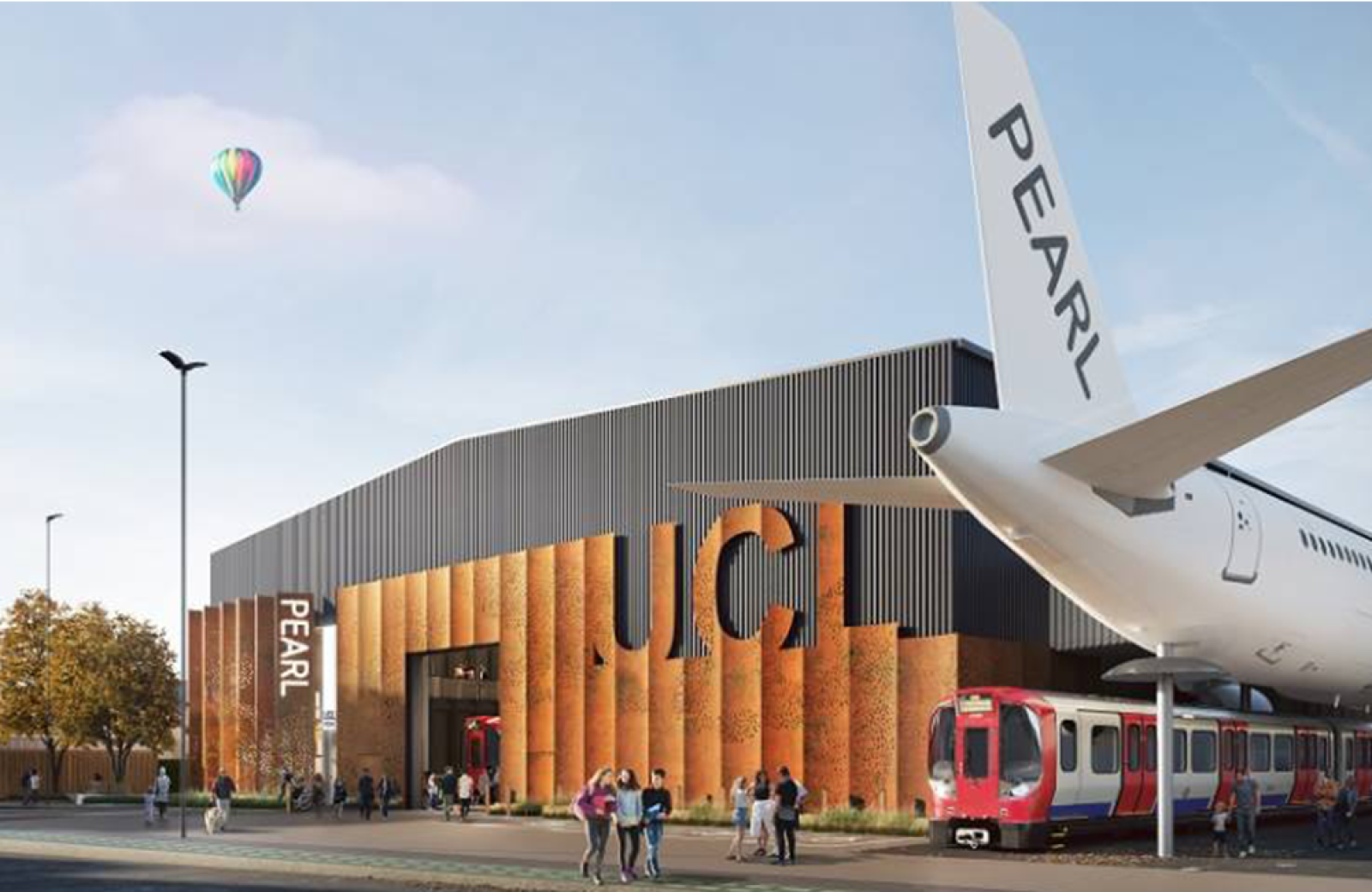How neuroscience experiments can put people at the heart of better transport solutions

Not many people will be aware of the fascinating scientific research that is taking place in a sleek zero-carbon warehouse tucked away in an industrial park in Dagenham. But last week, a group of Urban Transport Group members and myself visited the UCL Person-Environment-Activity Research Laboratory (PEARL) in London for a sneak peek into how this innovative research facility is helping to design better spaces and places. Creating immersive experiences of everyday situations, the high-tech warehouse can transform into anything from a train station or urban park to high street, busy junction, or even a supermarket.
This unique facility and the dedicated team, led by Professor Nick Tyler, conducts large scale experiments, testing environmental conditions, such as space, colour, lighting, smell, touch and sound on people’s behaviour and their interaction with the urban environment, paying meticulous attention to every sensory aspect of the set-up of their experiments. The team at PEARL combines neuroscience, behavioural psychology, physics, engineering, architecture and even music to delve deep into the human micro-scale response to environment. By testing brain activity, skin response, mass-distribution, and emotional response, the research strives to provide design solutions to build a more accessible, safe, comfortable and sustainable space for all to use.
The PEARL team have recently worked on projects such as the redesign of a major shared space scheme in London to safely mitigate high volumes of traffic and pedestrian flows, as well as testing a variety of operating conditions on the Thameslink train-platform. Their work on accessible bus stops has seen a new design of kerb introduced in London and Brighton, which allows the bus to be steered by the kerb as it approaches the bus stop. The bus is able to stop close enough to the kerb so that it is not necessary to use a ramp for wheelchair users to board the bus, and it is much easier for older people to step onto the bus. Innovative research has also taken place at the laboratory on improving urban mobility, helping make moving around the city easier. Extensive experiments have even helped form proposals for developing improved energy saving designs for buses and a universal e-scooter sound alter system.
Broad assumptions of human nature and behaviour are used to design the built environment around us. These assumptions present a major challenge facing transport authorities and operators, who are often left to rely on subjective and limited tick box consultations and online simulated design tests. These fail to appreciate the lived experience and real-life use of the built environment and its constraints. Assumption rather than experience and a scientific evidence base is used to underpin designs that are often not accessible, pleasant or safe. The PEARL facility instead provides an insight into real-world environments, aiming to find real world solutions.
As we strive to right these wrongs and create accessible and sustainable services and environments around us for the benefit of all, it is the work lead by PEARL which can be crucial in helping us make the most informed decisions. Using an evidence-based understanding of how people consciously and subconsciously interact with the environment around them and how they come to make the decisions they do can provide a path towards better transport solutions. Whether that be in building more accessible and energy efficient buses, safer and more pleasant stations, better lit crossings, or designing efficient and safe shared highway spaces – this scientific and evidence-based approach can help us find practical solutions.
PEARL’s mission is to create a world where everyone can experience an improved quality of life through better design. Whilst PEARL works with clients from across the public and private sectors, from health to education and industry, transport already makes up a large part of their work. Throughout the visit and over discussions of the seemingly unlimited possibilities of PEARL’s research areas, it became clear that there are various ways in which this innovative research approach could aid UTG members and all transport authorities and operators. As we look for ways to build better transport and support our communities, it’s crucial to explore innovative ways to deliver outcomes that suit everyone’s needs and put people at the heart of design. UTG will seek ways to engage with PEARL on emerging issues on behalf of our members, taking advantage of this innovative approach to placemaking.
Monta Drozdova is Policy and Research Advisor at the Urban Transport Group

